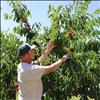Analyzing nutrition can improve beef cattle health
Hey savvy news reader! Thanks for choosing local.
You are now reading
2 of 3 free articles.
Forage quality analysis, as discussed in the first part of this article last week, is one of the most effective forage management tools. It is important to understand forage quality terminology to interpret forage nutrient analysis reports effectively. Following are more definitions of and typical ranges for the various common components of a nutrient analysis report.
• Net Energy
Although total digestible nutrients can be used as a guide with regards to energy, other systems allow more precise calculation of specific rates of gain and specific milk quantities produced. Net energy system is one such system. This system accounts for energy losses from digestion of different feeds and allows for energy to go towards maintenance or production.
• Relative Feed Value
Relative feed value is an index that combines the important nutritional factors of intake and digestibility. It has no units but the index allows comparisons of legume, grass and legume-grass forages. A forage with acid detergent fiber of 41 percent and neutral detergent fiber of 53 percent has an index of 100. Other forages can then be compared against this value.
When forage has a value above 100, it is not necessarily a superior quality forage. This is because the acid detergent fiber and neutral detergent fiber values that generate the value of 100 are relatively high, thus the forage is not considered any better than average. As the fiber values decrease, the relative feed value increases.
Mineral values are typically not assessed in general analyses by laboratories. Mineral analysis must often be specifically requested and may entail additional fees.
Forage samples submitted for nutrient analysis should be as fresh and representative as possible. This requires proper sampling technique. Use a forage probe with a sharp cutting device three-eighths to three-fourths of an inch in diameter to core bales instead of using “grab” samples. Sample at random from each hay lot. A lot should represent a single cutting, field and a quantity of no more than 200 bales. Supply adequate amounts of sample for analysis, a least half a pound of sample per lot. Combine at least 20 core samples from each hay lot into one sample for submission.
A nutrient analysis is a valuable tool to determine if problems do exist in forage or feed production and to best use these forages and feeds in a well-planned nutritional program. It is important to understand forage and feed analysis results in the context of animal requirements and the complete nutritional program.
For more information on forage and feed analysis or livestock nutrition, contact the MSU Lake County Extension Office at 676-4271.
















